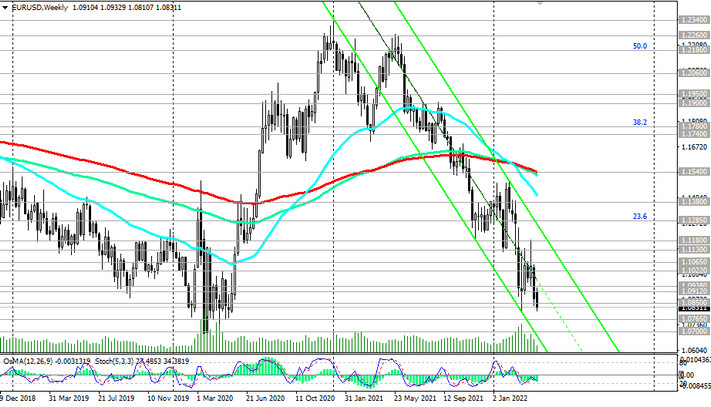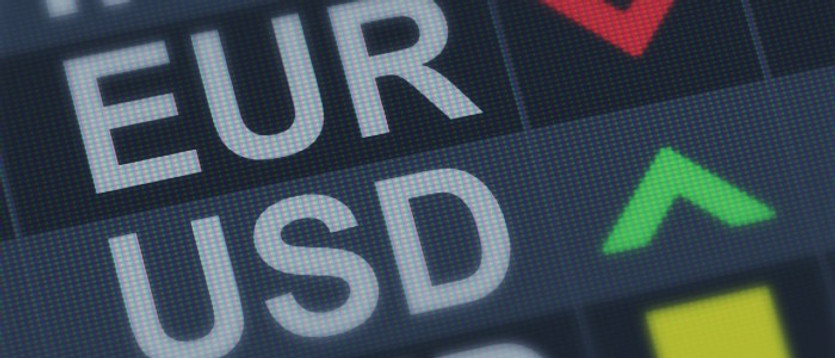The annual consumer price index (CPI) rose to 8.5% in March (against 7.9% in February), the highest value in 41 years, the US Department of Labor said on Tuesday. Thus, and as the data show, the CPI rose at the fastest rate since December 1981, also remaining above 6% for the sixth straight month. The value of 8.5% is more than 4 times the Fed's target.
On a monthly basis, CPI rose 1.2% (up from 0.8% in February), the fastest gain since September 2005. Steadily accelerating inflation in the US is fueled by rapidly rising energy and food prices, as well as supply problems and strong consumer demand, economists say.
The dollar fell after the publication of inflationary data for the US, because market participants felt that the Fed may not be able to cope with such a strong acceleration of inflation.
However, later on the dollar moved up again, and futures for the DXY dollar index closed on Tuesday at 100.29. Today the dollar is strengthening again, and the DXY dollar index reached a new 23-month high of 100.55 during the Asian trading session.
Most likely, the March inflation report will not change the Fed's plans for a more rapid tightening of policy. Richmond Federal Reserve Bank President Thomas Barkin said on Tuesday that the central bank could face more sustained inflationary pressures. "There are several reasons to believe that we may face additional hurdles to contain inflation", Barkin said. However, it could also mean, in his opinion, that interest rates will be higher than in recent years.
Thus, yesterday's decline in the dollar provided an additional opportunity for its buyers to build up long positions. Investors continue to believe that the Federal Reserve will raise rates more aggressively, also given the data released on Tuesday.
Of the significant events of today's trading day, it is worth noting the RBNZ meeting, which ended at 02:00 (GMT) with the publication of a decision on the interest rate. It was raised by 0.50% at once, to 1.5%. "A larger move now also provides more policy flexibility in light of the highly uncertain global economic environment", the central bank said in a statement. However, despite the increase in interest rates, the New Zealand currency fell sharply. The RBNZ leaders are trying to prevent a rapid rise in prices for consumer goods with their decision. But it is also fraught with a sharp slowdown in the economy, which is already facing constraining factors, including weak confidence of companies and consumers, China's quarantine policy and the situation in Ukraine.
Now the attention of market participants switches to tomorrow's meeting of the ECB. Market participants do not expect decisive action from the ECB to curb rising inflation.
The European Central Bank may signal that it will curtail stimulus at a faster pace, for example, by naming the end of June as the date for curtailing asset purchases. Bank officials may also signal that interest rates will rise shortly after asset purchases are completed. Market participants are counting two ECB interest rate hikes of 0.25% this year. But even with such an increase, the ECB's policy will still be considered soft: the ECB's deposit rate is currently -0.50%, and the main interest rate is 0%.
Soaring energy prices that have increased inflationary pressures, weakening consumer confidence and negative real wage growth in the Eurozone make the ECB's task of finding a balance between stimulating weakened economic activity and containing inflationary pressures much more difficult. As the head of the European Central Bank, Christine Lagarde, recently stated, “the longer the conflict (in Ukraine) lasts, the higher the economic costs will be, and the more likely we will find ourselves in worse scenarios”.
Thus, given the prospect of increasing divergence in the curves reflecting the monetary policy of the Fed and the ECB, we should expect a further decline in EUR/USD (with immediate targets at the levels of 1.0765, 1.0700 - see Technical analysis and trading recommendations).






